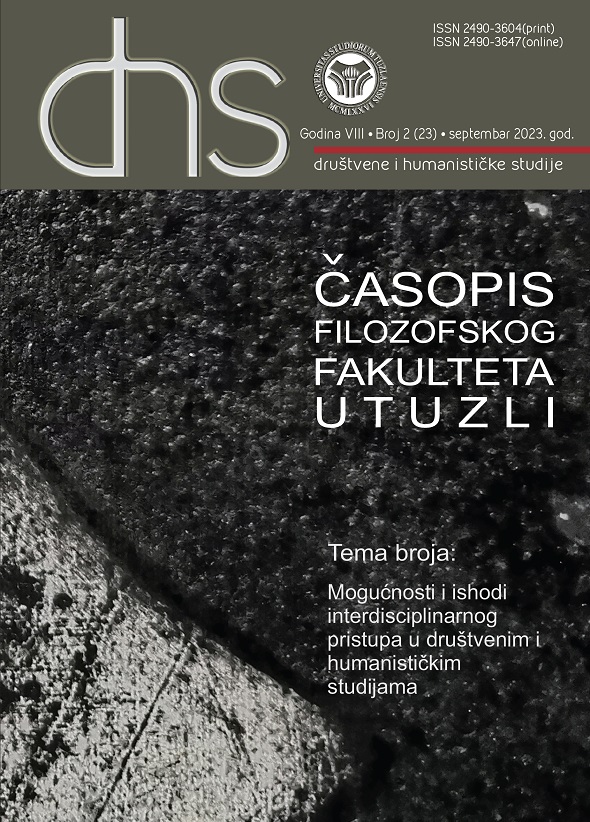Konstruktivizam kao popularni muzički narativ: slabljenje zvučnog, ideološkog i vizuelnog monopola u srpskoj muzičkoj industriji
Constructivism as a Popular Musical Narrative in Serbia: Changing of Sound, Ideological and Visual Monopoly in Serbian Music Industry
Author(s): Svetlana Lazić, Mirjana Matović, Sanja Maričić MesarovićSubject(s): Fine Arts / Performing Arts, Music, Sociolinguistics, Sociology of Art
Published by: Filozofski fakultet Univerziteta u Tuzli
Keywords: sociolinguistics; popular music; musical narrative; Konstrakta;
Summary/Abstract: The fact that popular culture and music, as part of the mainstream, continuously change and adapt, places them within the framework of contemporary critical theory. In this paper popular music is analyzed through the adaptation of the production of meaning to the dominant ideology and thus enables the understanding of the connection between socio-cultural parameters, language system, political, economic factors, and art. As a reflection of socio-political references, in Serbia, in the last three decades, musical ideas that grew out of the folk and street culture of the city have become intertwined. This paper represents a sociolinguistic analysis of the new musical thought of the singer-songwriter Ana Đurić, who goes by the artistic name Konstrakta, who, within the campaign for the Eurovision Song Contest in May 2022 in Turin, extended her artistic influence beyond the national borders of Serbia. In the analyzed musical content, socio-political and economic concepts of reality in Serbia stand out. From the critical theory standpoint, music is placed sociolinguistically and is interpreted from textual, visual, musical, and non-musical (informative) aspects. The results of such analysis confirm its multimodal function and form a special narrative in which reality in music is represented by music within the framework of reality. Showing the ability to combine the elements of her own both musical and non-musical expression, Ana Đurić proved herself to be comprehensible to an audience of all ages, to those who understand Serbian, but also to others who understand Konstrskta’s parallel, visual language. The narrative she creates leads to the conclusion that the level of music consumption as pure entertainment has become a secondary track of the Serbian musical mainstream. In the strength of Ana Đurić’s social engagement, the recognizable antagonism of old and new musical ideas shapes the original Serbian musical language of the 21st century – clear and independent of the inertia of current musical high-production.
Journal: DHS-Društvene i humanističke studije: časopis Filozofskog fakulteta u Tuzli
- Issue Year: XXIII/2023
- Issue No: 23
- Page Range: 201-220
- Page Count: 20
- Language: Serbian

